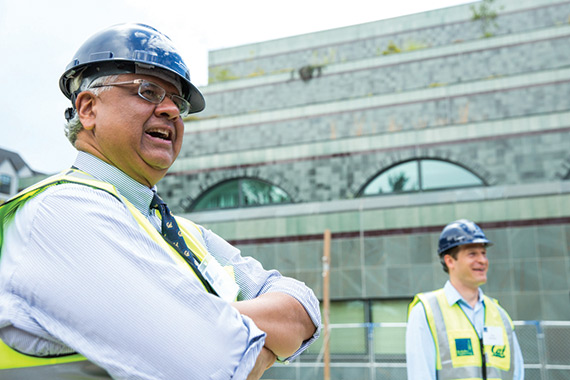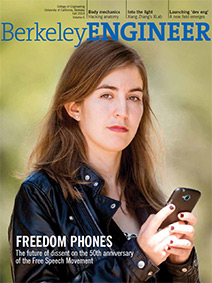Dean’s word: Engineering global solutions
Extreme poverty is not a new problem. But given the widening of globalized markets and the confluence of leapfrog technologies—including access to mobile telecommunications and niche manufacturing operations—enormous opportunities now exist to eradicate the root causes of global poverty.
Training the next generation of engineers to tackle the root causes of global poverty.
It is clear that traditional top-down models of international development are limited: material aid leads to dependence; well-meaning policies become mired by political instability.
In addition to market forces and access to technology, it will take human capital to build human capacity. That is why we take our responsibility to train the next generation of engineers very seriously.
Recognizing trends in the global landscape, the U.S. Agency for International Development (USAID)—the country’s largest international aid agency—recently signaled a change in tactics. With a collaborative, fast-moving posture (more Silicon Valley than Inside-the-Beltway), USAID administrators have made a commitment to ending extreme forms of poverty by 2030.
With USAID’s support, we opened the Development Impact Lab (DIL) on campus in 2012 to design, execute and scale poverty-alleviating systems and technologies.

UNDER CONSTRUCTION: Dean Sastry oversees construction of Jacobs Hall. Home to the Jacobs Institute for Design Innovation, the LEED-certified building — to open in fall 2015 — will serve as a hub for hands-on learning for undergraduates. (Photo by Matt Beardsley)
The grant is managed by the Blum Center for Developing Economies and the Center for Effective Global Action in Economics, and includes many engineering faculty who have answered the call for socially responsible development engineering. As an outgrowth of the DIL mission, and in response to an outpouring of student and faculty demand, this semester we launched a development engineering designated emphasis (the graduate equivalent of a minor) for Ph.D. students. Many of the students in the program are engineers, but others come from economics, business and other quantitative disciplines. (Read more: Launching ‘dev eng’)
While much of DIL’s focus is on international solutions, in the words of advisory board member Arun Sarin, solutions often “boomerang” back to the developed world in the form of financial inclusion, arsenic-free drinking water for the Central Valley and so on.
Beyond our ethical and societal obligations, aggressively pursuing solutions to alleviate global poverty through smart infrastructure, adaptable technologies and inclusive systems will create better global adaptability and resiliency in times when the world’s big problems show no signs of recognizing international borders.
As always, I welcome your thoughts and ideas.
—S. Shankar Sastry
Dean and Roy W. Carlson Professor of Engineering
Director, Blum Center for Developing Economies
